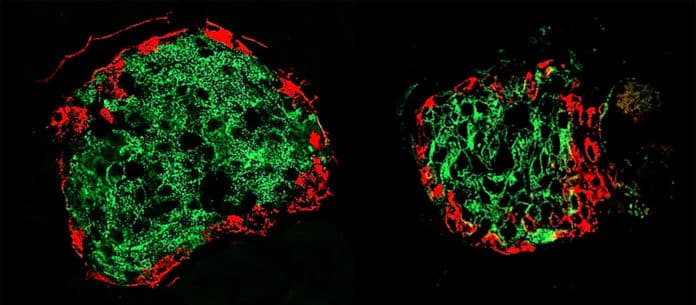Diabetes is a severe and growing metabolic disorder. If detected early enough, its progression could be reversed, but diagnostic tools that allow for early detection are lacking.
Researchers from the University of Geneva (UNIGE) and other institutions, including the HUG, have found that a decline in the blood concentration of the sugar 1,5-anhydroglucitol indicates a loss of functional beta cells. This molecule, which can be easily detected by a blood test, may be utilized to detect the onset of diabetes in at-risk individuals before it becomes irreversible.
Pierre Maechler, a Professor in the Department of Cell Physiology and Metabolism and in the Diabetes Centre of the UNIGE Faculty of Medicine, who led this work, said, “Identifying the transition from pre-diabetes to diabetes is complex because the status of the affected cells, which are scattered in very small quantities in the core of an organ located under the liver, the pancreas, is impossible to assess quantitatively by non-invasive investigations.”
“We, therefore, opted for an alternative strategy: to find a molecule whose levels in the blood would be associated with the functional mass of these beta cells to indirectly detect their alteration at the pre-diabetes stage, before the appearance of any symptoms.”
Scientists started working on finding a molecule that could identify pre-diabetes some years ago. In healthy, pre-diabetic, and diabetic mouse models, hundreds of chemicals were analyzed as the initial step. The research team was able to select, among thousands of molecules, the one that best reflects a loss of beta cells at the pre-diabetic stage: 1,5-anhydroglucitol, a small sugar, whose decrease in blood would indicate a deficit in beta cells. This was accomplished by combining potent molecular biology techniques with a machine learning system (artificial intelligence).
The research team, under the direction of Pierre Maechler, was encouraged by these findings in mice and moved on to the next phase, which involved assessing its applicability to humans. They examined the levels of 1,5-anhydroglucitol in diabetic patients with those in non-diabetics in collaboration with many scientists, including teams from the HUG.
Cecilia Jiménez-Sánchez, a postdoctoral fellow in the Department of Cell Physiology and Metabolism and the first author of the study, said, “We were able to observe a decrease in this sugar in diabetics. This was very motivating, especially as this decline was observable regardless of their symptoms, even before the onset of diabetes.”
Pierre Maechler said, “Diabetes is a complex disease in which many metabolic changes occur in parallel. It was, therefore, essential to test the relevance of this marker in people who suffer a sudden loss of their beta cells but in the absence of metabolic disorders. By studying the level of 1,5-anhydroglucitol in individuals whose half of the pancreas had been surgically removed, we could demonstrate that 1,5-anhydroglucitol is a blood indicator of the functional quantity of pancreatic beta cells.”
“This discovery opens new avenues for preventing diabetes, particularly for at-risk people. A simple blood sampling followed by an inexpensive specific test could identify a potential diabetes onset in these people, prompting actions to be taken before the situation becomes irreversible.”
“We still plan to test the relevance of this sugar in different types of patients and at different timescales, but it could lead to major progress in monitoring people at risk.”
Journal Reference:
- Cecilia Jiménez-Sánchez, Teresa Mezza, et al. Circulating 1,5-anhydroglucitol as a biomarker of ß-cell mass independent of a diabetes phenotype in human subjects. Journal of Clinical Endocrinology & Metabolism. DOI: 10.1210/clinem/dgac444
